#Employee Performance Tracking
Explore tagged Tumblr posts
Text
Why a Good Performance Management System Really Matters
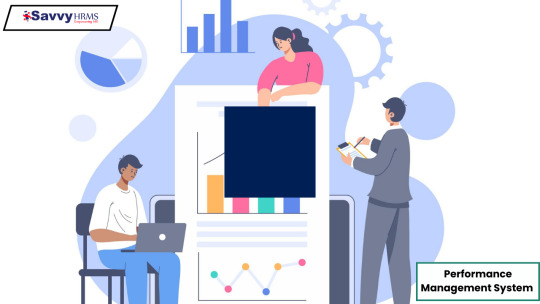
When we hear the words "performance management system," it's hard not to think immediately of spreadsheets, end-of-year reviews, or multi-step HR software. But at its core, performance management is actually all about enabling individuals to work as well as they can and develop in their jobs over time.
A performance management system (PMS) refers to an organizational method of assuring that workers are performing against goals and enhancing the success of the business as a whole. Fundamentally, performance management is not strictly about annual review or performance levels; it is an ongoing activity of establishing expectations, tracking performance, giving feedback, and helping to develop employees.
Because of this software there is clarity of goals among employees. Humans are more productive when they have a clear sense of what they're working for. When employees are clear about their goals and what they have to do it will boost productivity and they will achieve organizational goals.
With the help of this software managers give feedback to employees for an annual review, effective performance management is about checking in on a regular basis. A brief conversation or an informal check-in can pay big dividends. It catches issues early, recognizes successes, and keeps everyone on track.
This software helps in the development of employees. A good performance system doesn't only care about what somebody did last quarter it looks to the future. When leaders take the time to develop their team, they send a strong message: "We care about you, not just your output."
Performance management system is developed to help employees and managers and it isn't about control about being a boss, it's about support. When it is done correctly, it establishes an environment in which individuals feel respected, motivated, and empowered to excel. It's good for them, and even better for the organization itself.
0 notes
Text
10 Powerful Productivity Hacks to Boost Employee Performance
Productivity is the backbone of any successful organization. High-performing employees don’t just get more done, they drive business outcomes, improve workplace morale, and contribute to a thriving company culture. As a manager, enhancing your team’s productivity isn’t just an aspiration; it’s a necessity in today’s competitive environment.
This blog explores what employee productivity means, why it matters, how to track it effectively, and, most importantly, 10 actionable productivity hacks to help managers elevate team efficiency.
What is Productivity?
In a business context, employee productivity refers to the efficiency with which tasks and goals are completed. For employees, it means achieving maximum output with minimal wasted effort or time. A productive employee doesn’t just check tasks off a list — they complete meaningful work that aligns with organizational objectives.
Productivity isn’t static; it fluctuates based on motivation, workplace environment, tools, and leadership. Understanding what drives productivity in your team is key to sustaining high performance.
How To Track Employee Productivity?
Employee productivity tracking is a critical component of effective management. Without it, you’re operating blind, unsure of where your team excels and where improvements are needed. Here are a few practical steps to monitor productivity:
Set Clear KPIs: Define measurable objectives for employees, such as sales targets, project deadlines, or quality standards.
Use Time-Tracking Tools: Platforms like Asana, Clockify, or Trello help visualize where employees are spending their time.
Monitor Work Output: Compare output against the time and resources allocated to a task.
Conduct Regular Performance Reviews: Evaluate employee performance tracking metrics during one-on-one meetings.
Tracking productivity isn’t about micromanagement. It’s about gathering insights to provide better support and resources for your team.
The Importance of Employee Productivity
Why is productivity so critical in the workplace? The importance of employee productivity extends far beyond individual performance:
Higher ROI: Productive employees maximize the value derived from organizational resources.
Competitive Advantage: A high-performing team meets deadlines faster and delivers better quality, outpacing competitors.
Employee Satisfaction: Achieving goals boosts morale and motivates teams to aim higher.
Better Resource Allocation: Understanding productivity gaps allows managers to deploy resources where they’re needed most.
In short, when employees thrive, businesses thrive.
See Also
Six Strategies To Improve Teamwork & Collaboration At Your Workplace
10 Productivity Hacks Managers Need to Boost Team Efficiency
Here are 10 powerful strategies to unlock your team’s full potential:
Set SMART Goals: Encourage employees to set Specific, Measurable, Achievable, Relevant, and Time-bound (SMART) goals. This creates clarity and helps team members focus on priorities.
Leverage Technology: Invest in tools that streamline workflows and reduce manual effort. Productivity apps, project management software, and automation tools can transform how tasks are managed.
Encourage Breaks: Counterintuitive as it may seem, regular breaks enhance focus. The Pomodoro Technique, which alternates 25 minutes of work with 5-minute breaks, is particularly effective.
Promote a Growth Mindset: Foster a culture of continuous learning. Encourage employees to take ownership of their growth, experiment with new ideas, and learn from mistakes.
Provide Constructive Feedback: Timely, actionable feedback is key to employee performance tracking. Highlight areas for improvement without discouraging team members.
Create a Collaborative Environment: Encourage open communication and teamwork. A collaborative atmosphere makes problem-solving more efficient and reduces bottlenecks.
Recognize Achievements: Publicly acknowledge accomplishments to boost morale. Employee recognition fosters a sense of purpose and motivates others to excel.
Ensure Work-Life Balance: Burnout is a productivity killer. Offer flexible schedules, encourage time off, and respect boundaries to help employees recharge.
Invest in Employee Development: Provide training and upskilling opportunities. Employees who feel valued are more engaged and productive.
Streamline Meetings: Limit unnecessary meetings and ensure those that occur have a clear agenda. This minimizes disruptions and ensures employees have time to focus on meaningful work.
Looking for Ways to Boost Employee Productivity at Your Organization?
Employee productivity is not a one-size-fits-all concept. Every organization — and every employee — is unique. By understanding the importance of employee productivity, implementing employee productivity tracking tools, and adopting these productivity hacks, you can build a high-performing team that consistently delivers exceptional results.
If you’re ready to transform your organization, start by analyzing your current productivity metrics. Where do you see room for improvement? Which strategies can you implement today?
Remember, productivity isn’t just about working harder — it’s about working smarter. With the right approach, your team can achieve extraordinary outcomes while maintaining balance and satisfaction in their work lives. Visit www.handdy.com for more information.
#employee monitoring#productivity tracking#productivity monitoring#employee tracking#employee performance tracking
0 notes
Text
How to Increase Employee Productivity: Top Tips to Skyrocket Performance
In today’s competitive business landscape, increasing employee productivity is crucial for organizational success. Productive employees contribute more effectively, drive innovation, and help businesses achieve their goals. Here are some top tips to help you boost employee productivity and skyrocket performance:
1. Set Clear Goals and Expectations
Establishing clear, achievable goals is fundamental to enhancing productivity. Use the SMART (Specific, Measurable, Achievable, Relevant, Time-bound) framework to set well-defined objectives. When employees know exactly what is expected of them and have concrete targets to aim for, they are more focused and motivated.
2. Foster a Positive Work Environment
A positive and supportive work environment significantly impacts productivity. Encourage open communication, recognize achievements, and provide constructive feedback. Ensure that the workplace is inclusive and that employees feel valued and respected.
3. Provide Ongoing Training and Development
Invest in your employees' growth by offering regular training and development opportunities. This not only enhances their skills but also shows that you are committed to their professional growth, leading to increased motivation and productivity.
4. Leverage Technology
Use technology to streamline processes and reduce manual tasks. Implementing productivity tools such as project management software, time tracking apps, and communication platforms can help employees work more efficiently and stay organized.
5. Encourage Work-Life Balance
Promote a healthy work-life balance by offering flexible working hours, remote work options, and encouraging regular breaks. When employees feel that their personal lives are respected, they are less stressed and more productive.
6. Optimize the Workplace
Ensure that the physical workspace is conducive to productivity. This includes comfortable seating, proper lighting, and minimizing distractions. An organized and pleasant work environment can significantly enhance focus and efficiency.
7. Delegate Effectively
Effective delegation is key to maximizing productivity. Assign tasks based on employees’ strengths and expertise, and empower them to take ownership of their work. This not only ensures tasks are completed efficiently but also helps in employee development.
8. Implement Regular Feedback Mechanisms
Regular feedback is essential for continuous improvement. Conduct frequent check-ins and performance reviews to discuss progress, provide guidance, and address any issues. Constructive feedback helps employees stay on track and improve their performance.
9. Encourage Collaboration
Foster a culture of collaboration by promoting teamwork and open communication. Use collaborative tools and arrange regular team-building activities to strengthen relationships and improve collective productivity.
10. Set Up a Rewards and Recognition Program
Recognize and reward employees for their hard work and achievements. Acknowledging their efforts through incentives, bonuses, or even a simple ‘thank you’ can boost morale and motivation, leading to increased productivity.
11. Minimize Unnecessary Meetings
Meetings can be a significant time drain. Assess whether meetings are necessary and keep them concise and focused. Use alternative communication methods, like emails or instant messaging, to share information that doesn’t require a formal meeting.
12. Provide the Right Tools and Resources
Equip your employees with the tools and resources they need to perform their tasks effectively. This includes software, hardware, and access to information. When employees have what they need at their fingertips, they can work more efficiently.
Conclusion
Increasing employee productivity requires a multifaceted approach that includes clear goal-setting, a positive work environment, ongoing development, and effective use of technology. By implementing these strategies, you can create a more motivated, efficient, and productive workforce, driving your business towards greater success.
Investing in your employees' productivity is investing in your organization's future. By focusing on these top tips, you can ensure that your team performs at its best, leading to improved outcomes and a stronger competitive edge in the market.
#Employee monitoring#employee productivity tracking#Employee productivity monitoring#Employee performance tracking#Employee engagement#Employee time tracking#Time tracking software
0 notes
Text
Real-Time Performance Tracking: Benefits And Best Practices
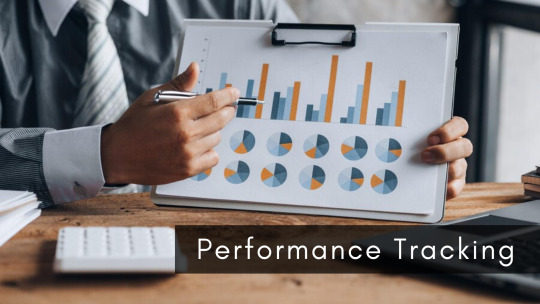
Tracking of performance is a critical process for businesses aiming to monitor and improve their efficiency and productivity. It involves systematically measuring key performance indicators (KPIs) to assess how well various aspects of the business are performing. This can include tracking sales figures, customer satisfaction levels, employee productivity, and other relevant metrics.
Effective performance tracking provides valuable insights that help businesses identify strengths and weaknesses. By analyzing this data, companies can make informed decisions to optimize operations, allocate resources more effectively, and set realistic goals. For instance, tracking sales performance can highlight successful strategies and pinpoint areas needing improvement, while monitoring customer feedback can lead to enhancements in service quality.
Modern tracking often leverages technology, utilizing tools and software to automate data collection and analysis. These tools can provide real-time feedback, enabling businesses to respond swiftly to emerging trends or issues. Additionally, visual dashboards and reports make it easier to interpret complex data and communicate findings to stakeholders.
Why Performance Tracker Is Essential For Companies?
A performance tracker is essential for a company because it provides a structured and systematic way to measure, analyze, and enhance various aspects of business operations. By tracking key performance indicators (KPIs), companies gain valuable insights into their efficiency, productivity, and overall performance. This data-driven approach enables managers to identify strengths and weaknesses within the organization, make informed decisions, and implement targeted improvements.
Furthermore, tracking facilitates goal setting and progress monitoring, ensuring that teams remain aligned with the company’s strategic objectives. It also fosters accountability and transparency, as employees can see how their efforts contribute to the company’s success. In a competitive market, having a robust tracking of performance systems allows companies to stay agile, respond quickly to emerging trends, and maintain a competitive edge by continuously optimizing their processes and strategies.
Workforce Management Tools Benefits
Workforce management tools offer a multitude of benefits that enhance organizational efficiency, productivity, and employee satisfaction. These tools streamline various aspects of workforce management, including scheduling, attendance tracking, Employee Activity tracking, performance monitoring, and payroll processing. Here are some key benefits:
Improved Scheduling And Resource Allocation
Workforce management tools enable managers to create efficient schedules that align with business needs and employee availability. This ensures that the right number of staff are scheduled at the right times, reducing instances of overstaffing or understaffing and optimizing resource allocation.
Enhanced Productivity
By automating time-consuming administrative tasks such as attendance tracking and payroll processing, workforce management tools free up managers to focus on strategic activities. Employees also benefit from automated systems that minimize errors and streamline processes, allowing them to concentrate on their core responsibilities.
Accurate Attendance And Time Tracking
These tools provide precise tracking of employee attendance, working hours, and leave requests. This reduces the likelihood of errors and disputes, ensures compliance with labor laws, and helps in accurate calculation of wages, thereby enhancing trust and transparency within the organization.
Better Compliance And Reporting

The work performance tools help organizations comply with labor laws and regulations by maintaining accurate records and generating comprehensive reports. This can be crucial for audits and legal compliance, reducing the risk of fines and penalties.
Data-Driven Insights
Advanced analytics and reporting features in workforce management tools provide managers with actionable insights into workforce performance, productivity trends, and areas for improvement. This data-driven approach enables informed decision-making and strategic planning.
How Does Employee Performance Tracking Worth It?
Employee tracking of performance is immensely valuable for organizations as it enables a comprehensive understanding of individual and team contributions towards achieving business goals.
By systematically monitoring and analyzing employee performance, companies can identify high performers, recognize and reward their efforts, and provide targeted support and development for those needing improvement. This process fosters a culture of accountability and continuous improvement, motivating employees to strive for excellence. Also Watch: Leading Employee Engagement and Workforce Productivity Tool
youtube
Conclusion
In conclusion, performance tracking is a crucial component for any organization aiming to optimize efficiency, productivity, and overall success. By systematically measuring key performance indicators (KPIs), businesses gain valuable insights into their operations, allowing for informed decision-making and strategic planning.
Effective tracking helps identify areas of strength and weakness, facilitating targeted improvements and resource allocation. It fosters a culture of accountability and continuous improvement, motivating employees to excel and aligning their efforts with organizational goals. Ultimately, tracking of performance ensures that companies remain agile, competitive, and well-positioned to achieve sustained growth and success in an ever-evolving market.
#Performance Tracking#employee performance tracking#employee performance#performance tracker#track employee performance#Youtube
0 notes
Text
13 Steps to Streamline Employee Performance Tracking
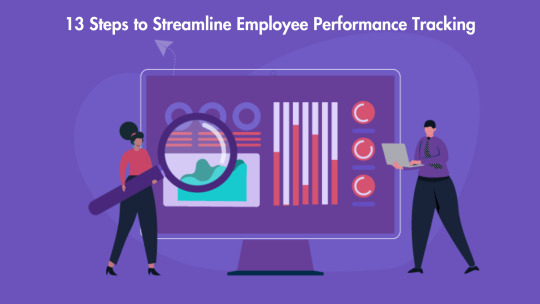
Employee performance monitoring is essential for businesses to ensure productivity and efficiency. However, manual tracking processes can be time-consuming and prone to errors. By streamlining the process, businesses can save time and resources while improving accuracy. Here are 13 steps to streamline employee performance tracking using workforce management tools and performance trackers:
Define Clear Goals and Expectations
Establishing clear goals and expectations is crucial for an effective employee performance tracker. By defining specific, measurable, achievable, relevant, and time-bound (SMART) goals, employees understand what is expected of them. This clarity fosters motivation and accountability, leading to improved performance.
Choose the Right Workforce Management Tool
Selecting the right workforce management tool is essential for streamlining performance tracking. Look for a tool that aligns with your organization's needs and goals. Features such as time tracking, task management, and performance analytics can help you track employee performance accurately and efficiently.
Implement an Employee Performance Tracker
Using an employee performance tracker allows you to monitor progress toward goals and track key performance indicators (KPIs) relevant to each employee's role. It helps you identify areas for improvement and provide targeted feedback.
Provide Regular Feedback
Regular feedback sessions are essential for keeping employees informed about their performance. Use the performance tracker to provide specific and constructive feedback, highlighting areas of strength and areas for improvement.
Encourage Employee Self-Assessment

Encouraging employees to assess their performance can lead to greater self-awareness and motivation. Use self-assessment as a tool for employee development and improvement, allowing employees to take ownership of their performance.
Offer Training and Development Opportunities
Providing training and development opportunities shows employees that you are invested in their growth. Use the performance tracker to identify areas where training is needed, helping employees improve their skills and performance.
Use Performance Data for Decision-Making
Using data from the performance tracker allows you to make informed decisions about employee performance. Identify trends and patterns to improve overall performance, helping you allocate resources effectively.
Automate Performance Tracking Processes
Automating performance-tracking processes can save time and reduce errors. Use automation to streamline tasks such as attendance monitoring and performance reviews, freeing up time for more strategic activities.
Integrate Performance Tracking with Other Systems
Integrating performance tracking with other systems, such as payroll and HR systems, ensures that data is shared seamlessly between systems. This integration reduces duplication of effort and improves data accuracy.
Review and Improve the Process Regularly
Regularly reviewing the performance tracking process allows you to identify areas for improvement. Solicit feedback from employees and managers to make the process more effective, ensuring that it continues to meet the needs of your organization.
Define Clear Goals and Expectations

Establishing clear goals and expectations is fundamental for an effective employee team tracking software. Clear goals provide employees with a sense of direction and purpose, helping them understand what is expected of them. When setting goals, ensure they are specific, measurable, achievable, relevant, and time-bound (SMART). This clarity not only helps employees focus their efforts but also allows managers to assess performance objectively. Additionally, clear expectations help prevent misunderstandings and promote a positive work environment based on transparency and accountability.
Choose the Right Workforce Management Tool
Selecting the right workforce management tool is essential for streamlining performance tracking and enhancing productivity. When choosing a tool, consider your organization's specific needs and goals. Look for features such as time tracking, task management, and performance analytics. These features can help you track employee performance more effectively, identify areas for improvement, and allocate resources efficiently. By investing in the right tool, you can streamline your performance-tracking processes and drive better business outcomes.
Implement an Employee Performance Tracker
Implementing an employee performance tracker can provide valuable insights into employee performance and help you make informed decisions. A performance tracker allows you to monitor progress toward goals and track key performance indicators (KPIs) relevant to each employee's role. By regularly reviewing performance data, you can identify trends, recognize top performers, and address performance issues proactively. This data-driven approach can lead to improved employee engagement, productivity, and overall business performance.
Conclusion
Streamlining employee performance tracking is crucial for organizations seeking to enhance productivity, efficiency, and employee engagement. By following the 13 steps outlined above, businesses can create a structured approach to performance tracking that promotes transparency, accountability, and continuous improvement.
#employee performance tracking#performance tracker#employee performance tracker#performance tracking#track employee performance
0 notes
Text
13 Steps to Streamline Employee Performance Tracking
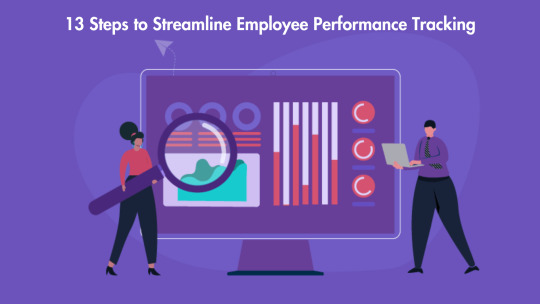
Employee performance monitoring is essential for businesses to ensure productivity and efficiency. However, manual tracking processes can be time-consuming and prone to errors. By streamlining the process, businesses can save time and resources while improving accuracy. Here are 13 steps to streamline employee performance tracking using workforce management tools and performance trackers:
Define Clear Goals and Expectations
Establishing clear goals and expectations is crucial for an effective employee performance tracker. By defining specific, measurable, achievable, relevant, and time-bound (SMART) goals, employees understand what is expected of them. This clarity fosters motivation and accountability, leading to improved performance.
Choose the Right Workforce Management Tool
Selecting the right workforce management tool is essential for streamlining performance tracking. Look for a tool that aligns with your organization's needs and goals. Features such as time tracking, task management, and performance analytics can help you track employee performance accurately and efficiently.
Implement an Employee Performance Tracker
Using an employee performance tracker allows you to monitor progress toward goals and track key performance indicators (KPIs) relevant to each employee's role. It helps you identify areas for improvement and provide targeted feedback.
Provide Regular Feedback
Regular feedback sessions are essential for keeping employees informed about their performance. Use the performance tracker to provide specific and constructive feedback, highlighting areas of strength and areas for improvement.
Encourage Employee Self-Assessment
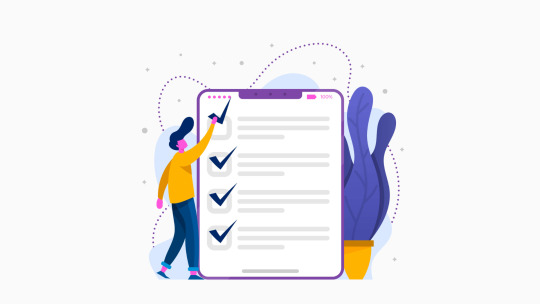
Encouraging employees to assess their performance can lead to greater self-awareness and motivation. Use self-assessment as a tool for employee development and improvement, allowing employees to take ownership of their performance.
Offer Training and Development Opportunities
Providing training and development opportunities shows employees that you are invested in their growth. Use the performance tracker to identify areas where training is needed, helping employees improve their skills and performance.
Use Performance Data for Decision-Making
Using data from the performance tracker allows you to make informed decisions about employee performance. Identify trends and patterns to improve overall performance, helping you allocate resources effectively.
Automate Performance Tracking Processes
Automating performance-tracking processes can save time and reduce errors. Use automation to streamline tasks such as attendance monitoring and performance reviews, freeing up time for more strategic activities.
Integrate Performance Tracking with Other Systems
Integrating performance tracking with other systems, such as payroll and HR systems, ensures that data is shared seamlessly between systems. This integration reduces duplication of effort and improves data accuracy.
Review and Improve the Process Regularly
Regularly reviewing the performance tracking process allows you to identify areas for improvement. Solicit feedback from employees and managers to make the process more effective, ensuring that it continues to meet the needs of your organization.
Define Clear Goals and Expectations

Establishing clear goals and expectations is fundamental for an effective employee team tracking software. Clear goals provide employees with a sense of direction and purpose, helping them understand what is expected of them. When setting goals, ensure they are specific, measurable, achievable, relevant, and time-bound (SMART). This clarity not only helps employees focus their efforts but also allows managers to assess performance objectively. Additionally, clear expectations help prevent misunderstandings and promote a positive work environment based on transparency and accountability.
Choose the Right Workforce Management Tool
Selecting the right workforce management tool is essential for streamlining performance tracking and enhancing productivity. When choosing a tool, consider your organization's specific needs and goals. Look for features such as time tracking, task management, and performance analytics. These features can help you track employee performance more effectively, identify areas for improvement, and allocate resources efficiently. By investing in the right tool, you can streamline your performance-tracking processes and drive better business outcomes.
Implement an Employee Performance Tracker
Implementing an employee performance tracker can provide valuable insights into employee performance and help you make informed decisions. A performance tracker allows you to monitor progress toward goals and track key performance indicators (KPIs) relevant to each employee's role. By regularly reviewing performance data, you can identify trends, recognize top performers, and address performance issues proactively. This data-driven approach can lead to improved employee engagement, productivity, and overall business performance.
Conclusion
Streamlining employee performance tracking is crucial for organizations seeking to enhance productivity, efficiency, and employee engagement. By following the 13 steps outlined above, businesses can create a structured approach to performance tracking that promotes transparency, accountability, and continuous improvement.
#employee performance tracking#performance tracker#employee performance tracker#performance tracking#track employee performance
0 notes
Text
#food#inventory management#restaurant automation#breakfast#baking#chocolate#cake#cooking#delicious#dessert#Cafe Software#Coffee Shop Management#Billing System#Order Customization#KOT Management#Bakery Inventory#Online Aggregator Integration#Employee Performance Tracking#Small Business Solutions#Operational Efficiency
0 notes
Text
Balanced Scorecard Framework: A Catalyst for Effective Enterprise Performance Management
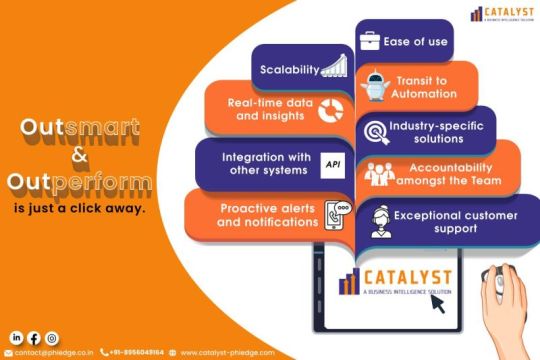
The term "catalyst" implies a substance that accelerates a reaction without being consumed itself. Similarly, the Balanced Scorecard Framework acts as a catalyst within the realm of EPM by accelerating the alignment of organizational objectives and strategies with actionable initiatives. Here's how:
1. Clarity in Objectives and Priorities
The Balanced Scorecard Framework begins with the identification and articulation of strategic objectives across the four perspectives. This process ensures that objectives are specific, measurable, aligned with the organization's mission, and interconnected. By involving key stakeholders in this process, organizations achieve clarity and consensus regarding what matters most.
2. Cascading Objectives Throughout the Organization
The Catalyst concept resonates strongly with the Balanced Scorecard's ability to cascade objectives and strategies throughout the organization. When objectives are clearly defined and communicated, they act as a catalyst for alignment. Each team and individual understands their role in contributing to the achievement of strategic goals.
3. Performance Measurement and Accountability
The framework's perspectives extend beyond financial metrics, encouraging a holistic view of performance. This enables organizations to measure progress and success across multiple dimensions. By establishing key performance indicators (KPIs) for each perspective, the Balanced Scorecard acts as a catalyst for accountability, encouraging continuous improvement and innovation.
4. Strategic Initiatives and Actionable Insights
The Balanced Scorecard's "cause-and-effect" relationships help identify the critical drivers of success. This insight guides the development of strategic initiatives that target specific areas for improvement. These initiatives act as catalysts for change, aligning resources and efforts toward achieving strategic goals.
Implementing the Balanced Scorecard Framework: Best Practices
To fully leverage the catalyst-like potential of the Balanced Scorecard Framework within an EPM context, consider the following best practices:
1. Leadership Commitment : Ensure strong leadership commitment and support for the implementation of the Balanced Scorecard Framework.
2. Stakeholder Involvement : Involve key stakeholders across all levels of the organization to gain insights and foster ownership.
3. Data-Driven Decision-Making : Leverage data and analytics to monitor KPIs and make informed decisions.
4. Regular Review and Adaptation : Continuously review and adjust the Balanced Scorecard based on changing business conditions and insights.
5. Communication and Transparency : Foster open communication about objectives, progress, and challenges to maintain alignment and engagement.
6. Focus on Strategy Execution: Use the Balanced Scorecard as a tool to execute strategy, rather than a mere measurement system.
#performance management#busniess#kpi metrics#kpi#business#benchmark#performance#employee tracking software#scorecard#business growth#business grants#growth analysis#okr software
2 notes
·
View notes
Text
Presence Equals Performance: The Role of Employee Attendance in Business Growth
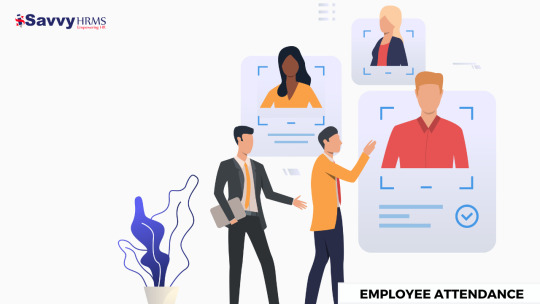
Employee attendance isn’t merely a measurement on a time card—it’s the heartbeat of an organization. Attendance signifies dedication, output, and general discipline at work. Employee Attendance may feel like a basic people metric for HR practices, but it contributes substantially to performance and has a significant role in business performance.
Why Does Employee Attendance Matter?
When employees are not present and place their role in an established working environment, it is very efficient. If employees attend work regularly on time, it creates functionality and productivity because of the regularity and predictability of how employees will work on schedule. Quite the opposite of attendance, which can have a large and negative impact on the work environment, employees must adjust accordingly increasing stress for further breakdowns within the teams, and for decreasing quality of performance from additional deadlines being enforced upon other team members, as well as potentially affecting client satisfaction.
Volume and quality of attendance also say a lot about an employee's engagement and reliability. It also says a lot about culture, management practices, and overall team morale.
What Features Should be Used to Track Employee Attendance?
No business needs a simple process to record and track attendance. Here are key features you should be considering when tracking attendance now and in the future:
Tracking in Real Time: Must know who is in, who is late, and who is at home at this moment.
Biometric or Digital Punch-in: most important must check fraud free, accurately, and not managing on a paper trail.
Leave Integration: adjusts hours for the employee automatically according to leave days or holidays that were requested and granted.
Customizable Shifts: Allow support for different employees or departments and groups.
Mobile Access: Allows remote employees or those in the field to clock in or out while traveling.
Automated Reports: Daily, weekly or monthly attendance reports which can be analyzed quickly for new insights.
Benefits of Proper Attendance Management
Increased Accountability: Employees are much more likely to follow an organized work schedule when there are systems in place to support it
Evaluate Fairly: Having accurate information on attendance will make a difference in evaluating discilpined or performance based editing for either increase or decrease in pay, or a disciplinary process.
Reduced Payroll Discrepances: When the time has been accurately recorded, there is less conflict when calculating salary.
Conclusion
Smart Employee Attendance is something much bigger than just a process; it's a representation of your organizations outlook. Managing attendance is important whether you are in-charge of 10 employees or 10,000. Furthermore, managing employee attendance effectively contributes to better decisions, improved discipline and performance results. Over time, thinking about time will shape a culture with a focus on quality and ownership.
0 notes
Text

Transform your HR operations with Dextrous Info's ERP system. Automate payroll, attendance, performance reviews, and more to boost efficiency by 50%. Contact us today! 🌐 www.dextrousinfo.com | 📧 [email protected] | 📞 +91 981-001-9909
#HR ERP software#Payroll automation#Employee performance management#Attendance tracking system#HR productivity tools
0 notes
Text
youtube
In this video, we explore the emerging trends, technologies, and innovations shaping the future of employee monitoring software, with insights from industry experts and a closer look at how wAnywhere is leading the way.
#future of employee monitoring software#wAnywhere#AI#Software#Monitoring Tool#Technology#AI Software#AI Tool#Employee Monitoring#Track Employee Performance#HR Software#Tech Software#Youtube
1 note
·
View note
Text
Powerful HR Payroll Software for Bahrain Businesses
Get complete control over your HR processes with our HR payroll software in Bahrain. Featuring a customizable performance management system, employee appraisal system, and efficient leave management tools, our solution also simplifies employee records management.
#hr & payroll software#hr payroll software#hr software pricing#employee training software#travel management software#Employee Offboarding Software#core hr software#HR Reporting Software#Employee management software#payroll software#hr payroll software bahrain#employee appraisal system#performance management system#employee records management#leave management system#leave tracking software#asset management system#asset management software#attendance management software#employee attendance software#time and attendance software#Onboarding software#Cloud HR Software#hiring software#hr software in bahrain#talent acquisition software#HR Onboarding#best cloud hr software#HR Software#hr software systems
0 notes
Text
The Pros and Cons of Implementing Employee Monitoring Software
Employee monitoring is not necessarily micromanaging or tracking what your employees are up to. Instead, it is a method used by modern businesses to track employee time, monitor computer activity and analyze work pattern/productivity.
To decide whether you should implement employee monitoring software at your organization, it’s important that you weigh up the pros and cons of employee monitoring in the workplace.
Let’s discuss some of the key benefits of monitoring your remote team with the help of an employee monitoring software.
Pros of employee monitoring to your business:
Implementing employee monitoring software helps you overcome the most common challenges that businesses face in today’s work environment. Listed below are a few of them;
1. Eliminate insider threats: Data security issues doesn’t have to always be a malware attack – sometimes it can originate from within the organization itself. Implementing employee monitoring software helps you address such insider threats. You get to see the applications used, websites visited and screen shots of employee computer activity in real-time. You can always go back, analyze data and look for warning signs/indicators of suspicious activity and address them well in advance.
2. Know your employee computer activity: Employee monitoring software gives you a detailed report of your employee computer activity during work hours. It gives you a clear insight of their work pattern and helps you understand if your company device or network is being used appropriately.
3. Stay on top of your employee productivity: Implementing employee monitoring software helps you analyze individual employee performance - backed by accurate data and reports. These time stamped reports help you analyze work patterns, eliminate guesswork and provide feedback where it is required.
4. Hassle free project reporting: Employee monitoring software helps you with accurate timesheet reports for your entire team or for an individual employee. These reports can be used to analyze the most time-consuming projects/tasks or can be used as timesheets for client reporting purposes.
5. Reduced HR/admin workload: Employee monitoring software automatically tracks and records employee time and attendance. By this way, you can reduce HR or admin workload in attendance and payroll management.
6. Maintain your corporate values: Implementing employee monitoring and productivity software motivates your employees to make proper use of time. Employees tend to be punctual during clock-in/clock-out and be more efficient at work – when they realize they are being monitored.
Cons of employee monitoring that you should be aware of:
Though employee monitoring brings a whole lot of benefits for businesses and employees, it is not without its challenges. Staying aware of these downsides will help you address employee privacy concerns in the workplace.
1. Develops lack of trust: When employees know that they are being monitored, they might assume that you do not trust them. They may develop a sense of being micromanaged and get demotivated resulting in poor performance.
Solution: Educate your employees on the need to implement employee monitoring software. Let them know that they are not being targeted, instead each and every employee in the organization will be monitored.
2. Employee privacy concerns: Some employees feel uncomfortable when their computer activity is being monitored. They perceive it as an invasion of privacy or assume they are being micromanaged.
Solution: Let your employees know why their computer activity is being monitored. Give them the assurance that they will be monitored only during work hours and only while using company assets.
3. Reduces employee morale: This applies for employees who have been with you for a very long time. When they are subjected to monitoring for the first time, it de-motivates them and reduces their morale in the workplace.
Solution: Talk to your senior employees and let them know how happy you are about their deliverables, commitment and dedication. Make them understand their responsibility in setting examples and helping junior team members adhere to company policies.
Is employee monitoring right for your business?
Employee monitoring software is no more a choice, but a necessity for businesses in today’s modern workplace. Though an employer has all rights to know what his employees are up to - during work hours and while using the company PC – it is advisable to put it forth in the right manner. You can always start by educating your employees on the importance of employee monitoring in the workplace. This will eliminate doubts and help your employees understand the need for implementing employee monitoring software in the workplace.
Also Read: Employees Benefit of Employee Monitoring Software?
As remote working or work from home being the new norm, implementing employee monitoring software is so far an affordable way to track employee time and productivity. Handdy employee monitoring and productivity tracking software lets you track your employee computer activity and provides accurate reports that support in making data-driven business decisions. Click start your free trial and see for yourself the positive difference Handdy software can add to your overall business performance.
#employee monitoring#productivity tracking#productivity monitoring#employee activity tracking#employee performance tracking
0 notes
Text
“It's not just performance, it's also impact: The need for a performance management system”
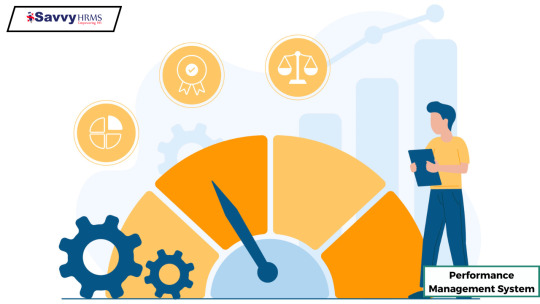
Think about it, if a team works without a goal, will it really reach its full potential? Maybe not. That is why every organization needs a system that not only records the work but also understands its significance. This is where the importance of Performance Management System (PMS) begins.
People think that PMS means appraisal time, filling a form, the boss writing something and that's it. But in reality, PMS is a continuous journey - which includes goal setting, regular feedback, growth tracking and fair evaluation.
What does PMS actually do?
First of all, clear goals are set for each employee according to their work – without any confusion. Then, they get timely feedback during work – so that they understand what is going well and where improvements are needed.
Then when the time comes for performance review, it is based on data and real input, not on any bias or gut feeling. This makes decisions regarding promotion or salary hike more transparent and fair.
What is the effect of this?
People start understanding their role and expectations clearly.
It also becomes easier for managers to track someone's work.
A culture of giving feedback is created so that people can learn and improve.
Everyone grows together, without any ego or politics.
The best part is that PMS creates a positive, trust-worthy work environment. When people feel that their work is not just being seen, but also understood, they start improving themselves.
Conclusion
The Performance Management System is not a boring HR tool – it is a mindset of growth. This system recognizes every person who is honestly giving his 100%. And in today's time, what can be more motivating than this?
0 notes
Text

HR & Payroll Software for Small Businesses
Discover Bahrain’s leading HR & payroll software for businesses of all sizes! Process payroll with ease, train employees with built-in employee training software, and simplify business travel with travel management software.
#hr & payroll software#hr payroll software#hr software pricing#employee training software#travel management#software#Employee Offboarding Software#core hr software#HR Reporting Software#Employee management software#payroll#hr payroll software bahrain#employee appraisal system#performance management system#employee records#management#leave management system#leave tracking software#asset management system#asset management software#attendance management software#employee attendance software#time and attendance software#Onboarding software#Cloud HR#Software#hiring software#hr software in bahrain#talent acquisition software#HR Onboarding
0 notes
Text
Comprehensive HRMS Solutions for Streamlined Workforce Management
A Human Resource Management System (HRMS) is a comprehensive software solution designed to optimize and automate core HR functions. From payroll and attendance tracking to recruitment and employee performance management, an HRMS streamlines operations, saving time and improving accuracy. Advanced features like workforce analytics, compliance tools, and mobile accessibility ensure businesses can scale efficiently while fostering employee engagement. Tailor your HRMS to fit your organization’s needs and unlock the potential for a productive and satisfied workforce.
More info: https://ahalts.com/solutions/hr-services

#HRMS#HR Software#Workforce Management#Payroll Management#Recruitment Software#Employee Self-Service#Performance Analytics#Attendance Tracking#HR Technology#Talent Management
0 notes